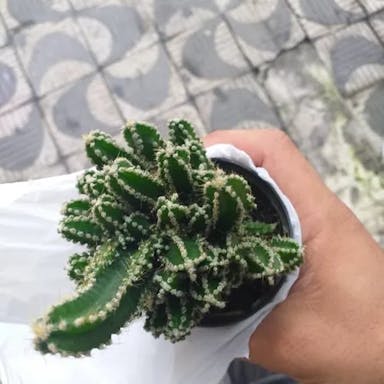Eryngo, scientifically known as Eryngium campestre, is a perennial plant native to Europe and Western Asia. It belongs to the Apiaceae family and is characterized by its spiky, silver-blue foliage and cone-shaped flower heads. The metallic blue flowers attract bees and butterflies. This drought-tolerant plant thrives in well-drained soil and full sun. It is commonly found in dry grasslands, rocky slopes, and coastal areas. The plant can grow up to 2 feet tall and is known for its unique appearance, making it a popular choice. While Eryngium campestre does not produce traditional fruits, its flower heads can be dried and used in floral arrangements or for medicinal purposes. This plant is relatively easy to grow and requires minimal maintenance, making it a favorite among gardeners looking to add texture and color to their landscapes.
0
0












